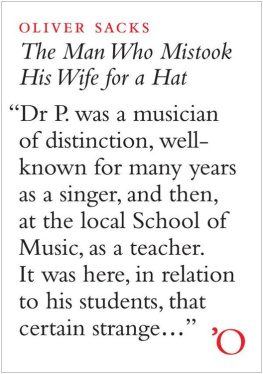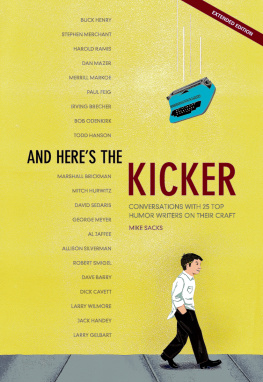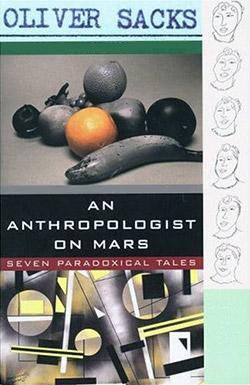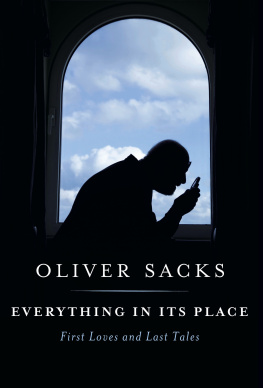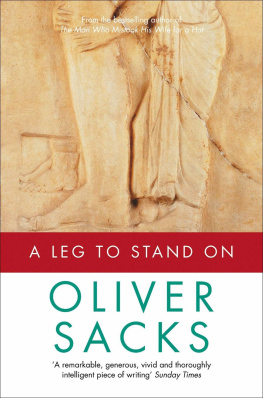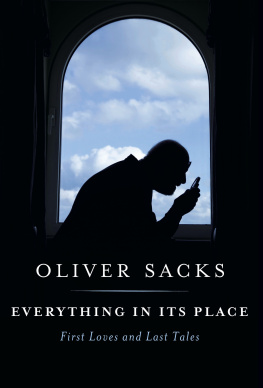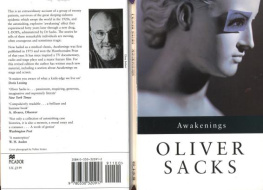Sacks - Letter Perfect
Here you can read online Sacks - Letter Perfect full text of the book (entire story) in english for free. Download pdf and epub, get meaning, cover and reviews about this ebook. year: 2007, publisher: Random House Inc., genre: Home and family. Description of the work, (preface) as well as reviews are available. Best literature library LitArk.com created for fans of good reading and offers a wide selection of genres:
Romance novel
Science fiction
Adventure
Detective
Science
History
Home and family
Prose
Art
Politics
Computer
Non-fiction
Religion
Business
Children
Humor
Choose a favorite category and find really read worthwhile books. Enjoy immersion in the world of imagination, feel the emotions of the characters or learn something new for yourself, make an fascinating discovery.

- Book:Letter Perfect
- Author:
- Publisher:Random House Inc.
- Genre:
- Year:2007
- Rating:4 / 5
- Favourites:Add to favourites
- Your mark:
- 80
- 1
- 2
- 3
- 4
- 5
Letter Perfect: summary, description and annotation
We offer to read an annotation, description, summary or preface (depends on what the author of the book "Letter Perfect" wrote himself). If you haven't found the necessary information about the book — write in the comments, we will try to find it.
Letter Perfect — read online for free the complete book (whole text) full work
Below is the text of the book, divided by pages. System saving the place of the last page read, allows you to conveniently read the book "Letter Perfect" online for free, without having to search again every time where you left off. Put a bookmark, and you can go to the page where you finished reading at any time.
Font size:
Interval:
Bookmark:
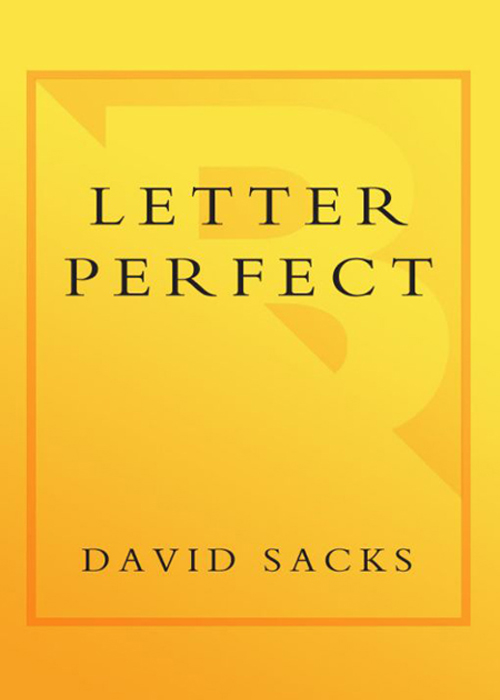

Table of Contents
For my parents, who taught me
PREFACE
This book attempts a voyage of discovery among the letters of the alphabet. Like islands of an archipelago, the 26 letters will be visited and explored, one at a time. Each islands geography and local lore will be examined briefly, also its relationship to other islands in the navigational stream. Some islands may prove more lush or lofty than others. But any one will yield substantial mental nourishment to visitors, along with glorious vistas onto language, literature, and history of the past 4,000 years.
Where do our letters come from? How did they get their shapes, their assigned sounds, their sequence, immortalized in our Alphabet Song? Why do we use Roman letters for Englishalso for Spanish, Czech, Turkish, Swahili, Vietnamese, and many otherswhile some languages (Russian, Greek, Arabic, Hindi, etc.) use different types of letters? What is a letter, exactly? Whats an alphabet? These are among questions to be answered with authority and zest.
And smaller questions, perhaps more intriguing. Why is X the unknown? What is The Story of O? Where did Irish rock band U2 get its name? Why does mother start with M? Whats Qs source of pride? Which two letters came last to the alphabet? (Answer: J and V.) Why is Z called zee in the United States but zed in Britain and other Commonwealth countries? Which animal did A originally symbolize? (An ox: the As legs were horns, pointing upward, 3,000 years ago.)
Every letter has its own chapter here. Typically, the chapter briefly explains the letters origin in ancient Near Eastern alphabets, including the Phoenician alphabet of 1000 B.C. (In this aspect, the book has benefited from a spectacular archaeological discovery made public in A.D. 1999 that placed the alphabets invention in Egypt, sometime around 2000 B.C.) Each chapter traces its letters history through ancient Greece and Rome, medieval England, and subsequent stages, and discusses the letters noteworthy roles in literature, traditional iconography, modern marketing and pop culture, and other categories. V for Victory. Presidential Dubya (W). Xbox, X-Files, X-Men.
Each chapter tries, where possible, to find the letters single chief significance for modern readersits personality, as expressed through speech or visual media. For instance, letter A means quality. B is forever second best. C is inconsistent in sound: Its troubles with commitment stem from an unstable childhood. Os shape can be highly inviting. S is the letter of the serpent, whether for evil or for nature. N needs your nose for pronunciation. And H, phonetically, barely qualifies as a letter at all.
Beyond the letters themselves, this book is partly about languages: English first of all, but also Latin, Greek, ancient Semitic tongues (of which Hebrew is the closest modern equivalent), medieval and modern French and other Romance tongues, and German, all relevant to the story of our 26 letters. While I dont speak every one of those languages, I have background in a few and have strived for accuracy in research.
The book uses language topics as the key to explaining the alphabet. Letters are images of language: They were invented, around 2000 B.C., to show tiny sounds of speech. Letters, when combined correctly, re-create the sounds of words (whether in English, ancient Greek, Arabic, Russian, etc.). If you take the spoken tongue as your starting pointany language outside of a test tube was spoken long before it began to be writtenand you picture an alphabet being fitted to the language, like clothing, amid adjustments, then the history and meaning of the letters become suddenly clearer.
Some books on the alphabet have viewed the letters primarily as items of visual design. Visual, indeed handsome, they surely are. But that approach makes it tough to explain how a letter got its sound(s), especially regarding irregularities. Why does C go soft in pronunciation before E, I, or Y? Why does J mean the sound j in English but h in Spanish and y in German? Such questions are easier to answer if you begin with the language sounds, not the written symbols.
Yet this is no textbook. It does not deal exhaustively with the subject, and I hope it is never boring. Facts are pursued with an eye toward what is enlightening, surprising, fun. The aim is to inform and entertain. I hope to convey how fascinating these 26 little shapes can be, how they contain within themselves thousands of years of culture and history.
The basis for this book was a 26-part weekly series that I wrote about the letters of the alphabet for the Ottawa Citizen newspaper (Ottawa, Ontario). The series covered one letter per week, from January to July 2000.
But the first inspiration dates to 1993, when I was at work on my one previous book, the Encyclopedia of the Ancient Greek World (Facts On File, 1995). Facing a huge assignment beyond my rudimentary knowledge, I was anxiously researching the ancient Greeks.
One topic was the Greek alphabet, including its origin, sometime around 800 B.C. I had learned in college that the Greeks, with no writing of their own at the time, acquired their alphabet by copying it from the Phoenicians (a Semitic people famed as seafarers, based in what is now Lebanon). I could have written those words on an examthe Greeks took their alphabet from the Phoenicianswithout understanding what that meant. I had always imagined some imitation by analogy: that the Greeks, impressed by the Phoenician letters, had gone off and invented two dozen letters of their own, to be Greek letters.
But my studies of 1993 taught me differently. The Greeks had copied more literally than that. (Pardon the pun.) The Greeks didnt copy just the idea of the Phoenician alphabet; they actuallycopied the Phoenician letters and started using them to write Greek.
Does it sound trivial? At the time, the realization stunned me. The ancient languages of Greek and Phoenician were as different as English and Arabic. Greek was (and is) a language of the Indo-European family; its modern relatives include English, German, Spanish, and Russian. The Phoenician tongue, now vanished, belonged to a separate language group, Semitic, whose major modern representative is Arabic, although Phoenician itself was probably closer to Hebrew. Semitic and Indo-European languages do not sound at all alike; their vocabularies are unrelated. And yet...
The Phoenician alphabet had 22 letters; the earliest working Greek alphabet, probably 26. The first 22 letters of the Greek list were nearly identical to the Phoenician in sequence, shapes, names, and, usually, sounds (with the exception of five vowel letters, which the Greeks had invented by reassigning certain Phoenician letters to symbolize vowel sounds). In later centuries the Greeks would adjust their alphabet away from the Phoenician model. But around 800 B.C., it seems the Greeks picked up Phoenician letters, made some changes and additions, and began writing.
What if a bunch of illiterate Anglo-Saxons in A.D. 600 had gotten their hands on the Arabic alphabet and started using it to write Old English? Could they have done so? I wondered. Wasnt that basically what the Greeks did?
There must, I thought, back in 1993, be more to these letters than I understood. How could Phoenician letters be so adaptable? Logically, wouldnt most of them be unusable for Greek, since the two languages were so different?
Next pageFont size:
Interval:
Bookmark:
Similar books «Letter Perfect»
Look at similar books to Letter Perfect. We have selected literature similar in name and meaning in the hope of providing readers with more options to find new, interesting, not yet read works.
Discussion, reviews of the book Letter Perfect and just readers' own opinions. Leave your comments, write what you think about the work, its meaning or the main characters. Specify what exactly you liked and what you didn't like, and why you think so.

